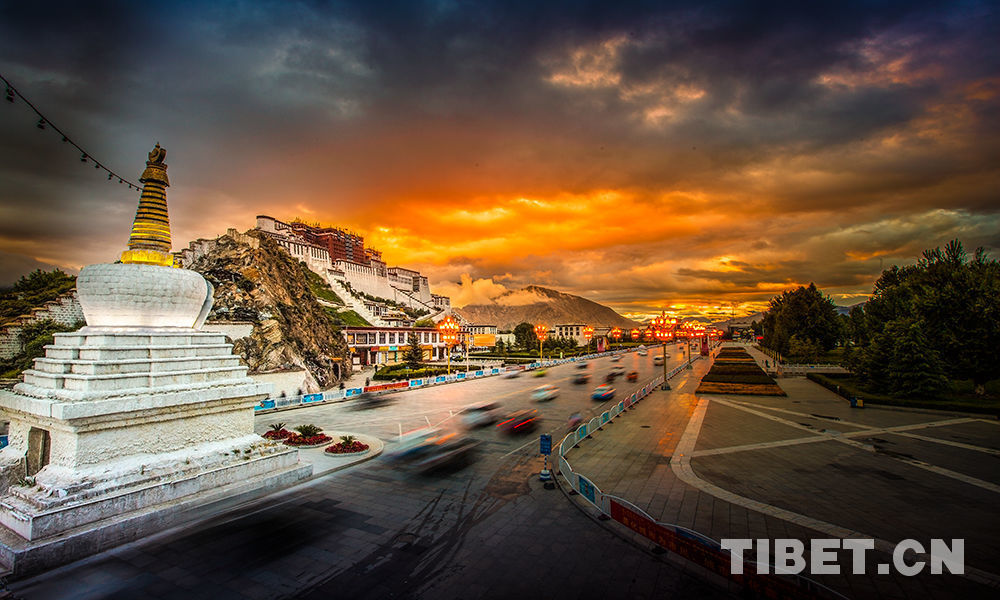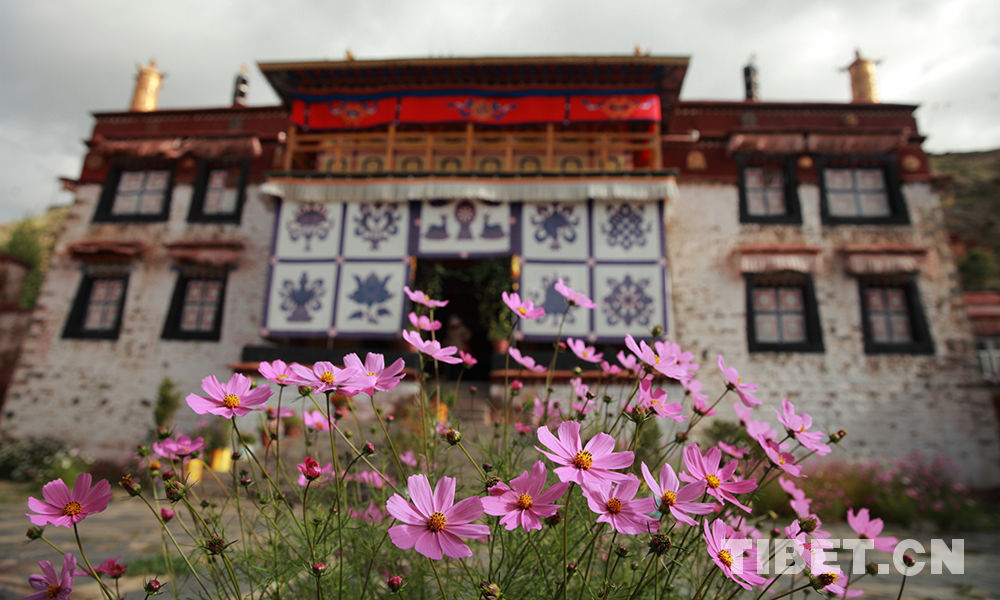How did Lhamo Thondup become the 14th Dalai Lama?
On July 6, 1935, Lhamo Thondup was born into a family of farmers in Qijiachuan of Huangzhong County, now part of the Ping’an County in Qinghai Province. Three years later, he was confirmed as the reincarnated soul boy of the 13th Dalai Lama. How did he then obtain the title of the 14th "Dalai Lama"?
Following religious ritual by observing the holy lake and search
After the 13th Dalai Lama passed away in 1933, Kashag, the local government of Tibet followed the historical convention and appointed a regent to search for his soul boy. In June 1935, a team of several hundred people including more than 20 eminent monk and lay officials headed by Regent Reting left Lhasa and headed for the Lhamo Latso Lake in Lhoka Prefecture. After observing the lake, Reting saw that in the waters of Lhamo Latso Lake, three Tibetan letters reading like‘a’, ‘ka’and ‘ma’, a three-storied gold lamasery with stone roof, a zigzag path to the east of the lamasery leading to a small bungalow with a blue roof on the opposite bare hill, a boy waving to him at the doorway and a big tree outside the courtyard. He said the‘a’referred to Amdo (now the Tibetan-inhabited areas except Yushu in Qinghai, Aba in Sichuan, Gannan in Gansu and Nagqu in Tibet).
The soul boy candidate exempted from "drawing lots from the golden urn"
In July 1937, the search party sent by Regent Reting arrived in Takster Village of Qijiachuan, where Tibetan, Han and other ethnic groups had lived together for 700 years, and people basically spoke the Qinghai dialect of Mandarin Chinese and only used few Tibetan words in their daily life. The serach party was very excited because they saw in reality the vision that Reting said he had seen in the lake: namely, the house with a blue roof. This was the home of Lhamo Thondup.
To maintain secrecy, Ke’u tshang, the head of the search team disguised himself as a servant.
When they entered the house, the four-year-old Lhamo Thondup suddenly cried out to be hugged by him, and also grasped the prayer beads hung around his neck, saying: "I want it." Amazed, Ke’u tshang asked the boy: "If you can tell who I am, I will surely give it to you." The boy replied: "You are the lama from Sera Monastery," which made the search party even more excited. One the following day, they dressed up to visit the family again. Several daily articles of the 13th Dalai Lama, such as the prayer beads were laid out before Lhamo Thonodup. To their surprise, the boy accurately identified all the items owned by the 13th Dalai Lama.
On Aug. 25, 1939, the soul boy accompanied by a large crowd of people arrived in Lhasa. After the welcoming ceremony hosted by the Regent Reting, Lhamo Thondup was taken to the Norbu Lingka, the summer palace of the Dalai Lamas. On Oct. 13, 1939, Lhamo Thondup was given the reverent title "Tenzin Gyatso" by Reting Rinpoche at a grand ceremony held in the Jokang Monastery.
During the whole process of search for the soul boy, the National Government, the then Central Government of China, had paid close attention. As soon as Lhamo Thonodup arrived in Lhasa, Kashag reported the situation to the Central Government. The Regent Reting also reported that Lhamo Thonodup was extremely "clever and occult" and it was not necessary to carry out the traditional selection process of "drawing lots from the golden urn" to finally decide on the soul boy.
However, the Central Government did not approve it. Instead, it sent Wu Zhongxin, Chairman of the Commission for Mongolian and Tibetan Affairs to ascertain the situation and preside over the reincarnation of the late 13th Dalai Lama together with the Reting Rinpoche.
Approval from the Central Government
After Wu Zhongxin arrived in Lhasa on Jan. 27, 1940, he asked Regent Reting to arrange for him to examine the soul boy. At first, Chigyab Hhembo of Norbu Lingka didn’t agree with the examination claiming that "mass rally of Tibet had the final say as the national assembly of the Central Government". But Wu’s side responded sternly: "The national assembly of the Central Government represents the whole country and Tibet also sent representatives to attend it. Tthe mass rally of Tibet only represents Tibet, equal to the council of each province in the hinterland of China. Tibet must obey the decisions of the Central Government."
On the following day, Regent Reting apologized to Wu and asked Wu to appoint time and place for examining the soul boy.
When Wu Zhongxin met with the soul boy, he tested him several questions to which the soul boy respond smilingly as he undertood Wu’s intention. The talk lasted for several minutes. After the examination was over, Wu cabled the Central Government and extended the letter from Regent Reting to ask for the exemption of Lhamo Thondup from the lot-drawing ceremony.
On Feb. 5, 1940, the Nationalist Government issued an official order that the "The Qinghai soul boy Lhamo Thondup, with unusual intelligent signs, has been found to be the reincarnation of the 13th Dalai Lama and should be allowed to ascend the throne as the 14th Dalai Lama without going through the lot-drawing ceremony."
On the 14th day of the first month of the Iron Dragon Year on the Tibetan Calendar, or Feb. 22, 1940, the five-year-old Lhamo Thondup was enthroned as the 14th Dalai Lama at the Potala Palace. According to the ritual of the Qing Dynasty’s High Commissioner in Tibet, the seat of Wu Zhongxin also faced south as that of the Dalai Lama, to the east of the throne, The seating arrangement is of greatest reference to the sovereignty of the Central Government over Tibet, which also proves that the title of the 14th Dalai Lama to Lhamo Thondup, or Tenzin Gyatso was only conferred by the Central Government.
Source from the book The 14th Dalai Lama
Your Comment
Name E-mailRelated News
-
-

-
Translation of latest woodblock print of 6th Dalai Lama's poems completed
The latest woodblock print of Tsangyang Gyatso poems has recently been proofread and translated. The print clarifies many misunderstandings about Tsangyang Gyatso's poetry.
-
-
-

-
Dalai Lama murder plot 'a stunt': Tibet
China rejected media reports that it had attempted to assassinate the Dalai Lama, calling it "a stunt" set up by the Dalai Lama himself to attract international attention.
-
-
-

-
US Senate ignorant and arrogant pointing fingers at China's domestic affairs
The adoption of a resolution by the US Senate on the reincarnation of the 14th Dalai Lama is another proof of some American's habitual and inexplicable ignorance and arrogance.
-







